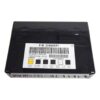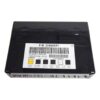Restore Full Electrical Function to Your GM Vehicle
Are you dealing with baffling electrical problems in your 2010 Cadillac Escalade or another compatible GM vehicle? Issues like flickering interior lights, unresponsive power windows and locks, a malfunctioning security system, or even a no-start condition can often be traced back to a single component: a failing Body Control Module (BCM). As the central hub for your vehicle’s body electronics, when the BCM falters, it can create a cascade of frustrating and unpredictable symptoms. This isn’t just an inconvenience; it can compromise your vehicle’s safety and reliability.
This replacement BCM is your direct, hassle-free solution. We take the guesswork and dealership expense out of the equation. Simply provide your vehicle’s VIN during checkout, and our technicians will program the module with the latest GM software specific to your vehicle. It arrives at your door ready for installation, saving you from costly programming fees and extended vehicle downtime.
I remember a 2010 Escalade that came into the shop with a list of ghost-in-the-machine problems. The owner said the radio would sometimes change stations on its own, the driver’s side window wouldn’t work on hot days, and the alarm would randomly go off. A scan showed a handful of U-codes, specifically a U0140 (Lost Communication With Body Control Module). Instead of just throwing parts at it, we checked the main power and ground circuits to the BCM, which were solid. This pointed directly to an internal failure of the module itself. After installing a VIN-programmed BCM like this one, every single one of the customer’s complaints was resolved. It’s a classic case of how a single module failure can wreak havoc on multiple, seemingly unrelated systems.
Is Your Vehicle Showing These Symptoms?
- ✔ Power windows, door locks, or mirrors operating intermittently or not at all.
- ✔ Interior or exterior lights flickering, staying on, or not turning on.
- ✔ The security system engaging randomly or preventing the vehicle from starting.
- ✔ The instrument cluster displaying erratic warnings or gauges behaving abnormally.
- ✔ Diagnostic trouble codes (DTCs) related to communication errors, such as U0140, U0155, or B1001.
- ✔ Remote keyless entry failing to work consistently.
Your Straightforward BCM Installation Guide
- ✔ Safety First: Always disconnect the negative terminal from your vehicle’s battery and wait a few minutes to ensure all systems are powered down.
- ✔ Locate the BCM: On the 2010 Escalade and similar GM SUVs/trucks, the BCM is typically located under the driver’s side of the dashboard, near the steering column. For vans and some cars, it may be in the center dash area.
- ✔ Remove Trim Panels: You may need to remove a lower dash panel or knee bolster to gain clear access to the module. These are usually held by a few screws or clips.
- ✔ Disconnect and Remove: Carefully unplug the electrical connectors from the old BCM. They have locking tabs that need to be depressed. Once disconnected, unbolt or unclip the module from its mounting bracket.
- ✔ Install the New BCM: Mount your new, pre-programmed BCM in place and securely reconnect all electrical connectors. Ensure they click into place.
- ✔ Final Steps: Reinstall any trim panels you removed and reconnect the negative battery terminal. Start the vehicle to confirm that primary functions are restored.
Important Post-Installation Information
While this module is programmed for your VIN, some vehicle systems may require a ‘handshake’ with the new BCM. Please be aware of the following potential procedures:
- Airbag System Sync: If the airbag warning light is illuminated after installation, a professional scan tool is needed to perform the “Setup SDM Primary Key in BCM” procedure. This syncs the new BCM with the airbag system.
- Brake Pedal Position Relearn: On certain models, a brake pedal position sensor relearn may be required to ensure correct operation of the brake lights and stability control systems.
- No Core Charge: You are not required to return your old module. This saves you time and the cost of return shipping.
Disclaimer: Vehicle systems vary. Always refer to a factory service manual or a certified mechanic for procedures specific to your vehicle.
Verified Vehicle Compatibility
This BCM is a direct replacement for part number 15948439 and is compatible with a wide range of GM vehicles. Please verify your original part number against our cross-reference list. This module fits the following applications:
Fitment Details:
ACADIA 07-12, AVALANCHE 1500 10 (ID 25892622), CAPRICE 11-13, CAPTIVA SPORT 12, CTS 08-13, DTS 06-11, ENCLAVE 08-12, EQUINOX 07-09, ESCALADE/ESV/EXT 10, EXPRESS/SAVANA VANS 08-12, G8 08-09, HUMMER H2 08-09, IMPALA 06-13, LUCERNE 06-11, MONTE CARLO 06-07, OUTLOOK 07-10, SRX 07-09, STS 10, SUBURBAN 1500 10, TAHOE 10, TORRENT 07-09, TRAVERSE 09-12, VUE 08-10, YUKON/YUKON XL 1500 10. (Please check the provided fitment data for specific options and ID requirements.)
Frequently Asked Questions
Do I need to do any programming myself?
No. We handle all the necessary programming before shipping the module to you. All we need is your vehicle’s 17-digit VIN to load the correct software for your specific options.
Is this a simple plug-and-play installation?
For most functions, yes. The module is programmed to work with your vehicle’s main features upon installation. However, as noted, some systems like the airbag (SRS) may require a synchronization procedure with a professional scan tool if a warning light appears.
Why is my airbag light on after installing the new BCM?
This is a security measure. The BCM and the Sensing and Diagnostic Module (SDM) for the airbags need to be electronically synced. A repair shop with a capable bidirectional scan tool can perform the ‘Setup SDM Primary Key in BCM’ procedure in a few minutes to resolve this.
Do I have to send my old BCM back?
No, there is no core charge for this part. You can keep your original module, which can be helpful for reference if needed.
Will this fix my ‘Service Stability System’ message?
A faulty BCM can sometimes cause this message by sending incorrect data. If the BCM is the root cause, this part should resolve it. However, this message can also be caused by other components like wheel speed sensors, so proper diagnosis is always recommended.


